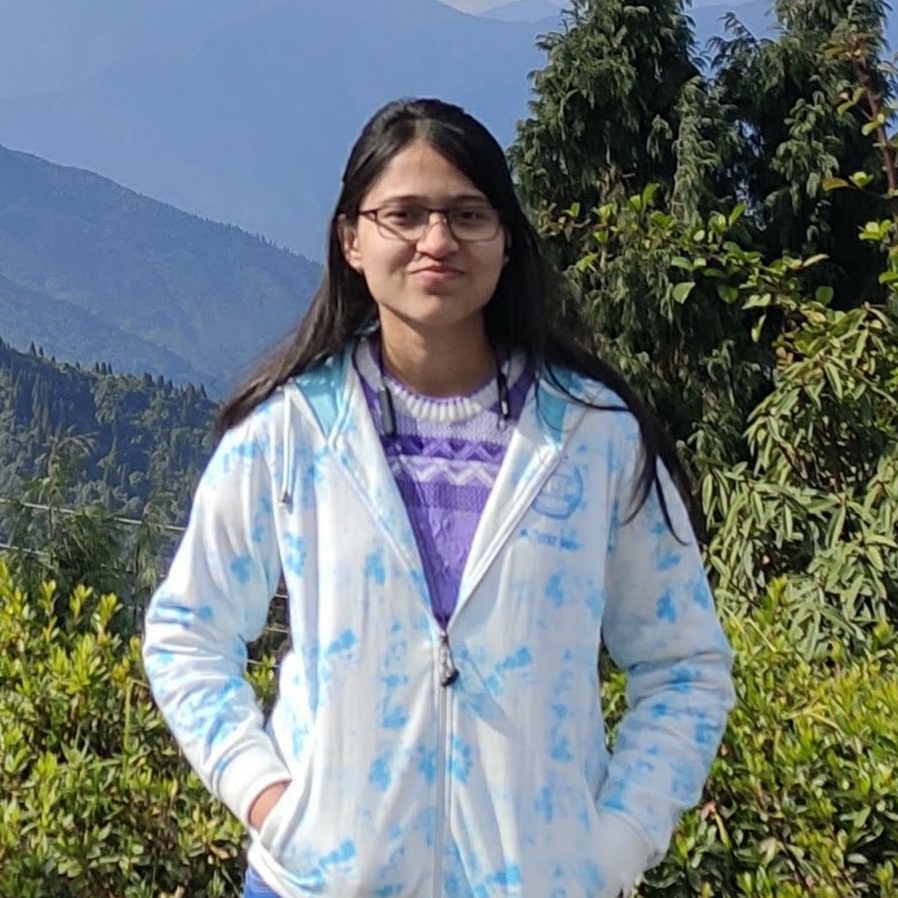ZTF Faces
This section features PhD students, postdocs and young faculty who are part of the global ZTF collaboration.
Kritti Sharma
Undergraduate student, IITB, India
Where was your starting point and how did you discover astronomy?
My hometown is Chandigarh, which is primarily famous for being the first planned city of India with distinctive architecture and eternal greenery. It is located at the foothills of the Shivalik range of the Himalayas, and the landscape supports a beautiful cycle of changing treescapes. An hour drive away from the city, Kasauli is a perfect amalgamation of picturesque hiking trails and lush landscape, immersed in clouds.
I was introduced to observational astronomy by activities of Krittika: the Astronomy Club of IITB, where I am an undergraduate student in the Department of Mechanical Engineering. In my sophomore year, I joined the club as a Convener, where I participated in Astromania and organized the Scientific Computation and Observation Planning General Championships. Of all branches of astronomy, I particularly find time-domain astronomy very captivating. It is a perfect fusion of computational astronomy and the challenging task of characterizing the evolution of these cosmic flashes.
My first professional exposure to the dynamic field of time-domain astronomy was the research project with the Zwicky Transient Facility (ZTF) and GROWTH-India Telescope (GIT) Collaborations under the guidance of Prof. Varun Bhalerao, Dr Bryce Bolin and Dr Michael Kelley. I worked on observations, automation of telescope operations and reducing astronomical data in this project, which was the most enjoyable experience.
What are you playing with in the ZTF playground?
The ZTF Streak semi-real-time pipeline, ZStreak, specializes in detecting Near-Earth Objects (NEOs) as streaks. I have scanned ZStreaks data to discover potential NEOs. I picked the optimal candidates and followed them up with GIT to confirm these discoveries. The follow-up of faint objects with significant sky-plane motion requires non-sidereal tracking to avoid trailing loss. I fully automated the non-sidereal data acquisition process for GIT. I also developed the software package, Astreaks to reduce non-sidereal images with stellar streaks.
I studied the episodically active asteroid (6478) Gault with the GROWTH Collaboration to constrain its rotation period. I have also observed several comet outbursts, discovered in ZTF data, to confirm the discoveries. We have been monitoring Comet 29P/Schwassmann–Wachmann, which tends to show unexpected massive short-term flare-ups. We witnessed a similar event where hovering at 16 mag, it blew up to 12 mag with four consecutive outbursts in October 2021. Along with the observers in Tenerife and France, we observed that its bursts had step-changes, indicative of short-lived cryo-eruptions. We also monitored Comet 67P/Churyumov–Gerasimenko close to its November 2021 perihelion. We discovered two outbursts with total ejected dust mass comparable to the enormous outbursts observed by the European Science Agency's Rosetta mission.
Where do you want to steer your rocket in the future?
The quest for time-domain astronomy is steered by robotic survey telescopes. I find the pursuit of processing terabytes of data thus generated by deploying intelligent algorithms to identify probable transients very interesting. Furthermore, I am interested in developing algorithms to prioritize the transients discovered to enable astronomers to invest their observational resources on selected needles in the haystack. Additionally, I am interested in characterizing these transients using observations spanning the entire electromagnetic spectrum.
If you were not an astronomer, what would you be?
Having been exposed to the various facets of Computer Science in my undergraduate studies, I have found Data Science most intellectually satisfying and stimulating. I have always been fascinated by data wrangling to derive statistical inferences. So, if not an astronomer, I would be a Data Scientist.
A book that shook your worldview?
The book titled "The Monk Who Sold His Ferrari" by Robin Sharma, which I read when I was 15-years old, positively influenced my worldview. This book helps develop joyful thoughts, even in the most challenging times and teaches us to cultivate self-discipline, value our precious time and act courageously. The most important lesson I learned from this book was taking "One Day at a Time" and living it fully. This was also said by Master Oogway in Kungfu Panda: Yesterday is history, tomorrow is a mystery, but today is a gift. That is why it is called present!
If you’ve had a bad day at work, you will….
As is well said, the love for gardening, once sown, never dies! I love planting saplings and cherish seeing them grow inch by inch every day. It is very satisfying to see plants grow, bear fruits, vegetables and flowers. For me, gardening is a peaceful escape from a sedentary life. So, whenever I have a terrible day at work, I grab my pruners and spend time with my plants.
